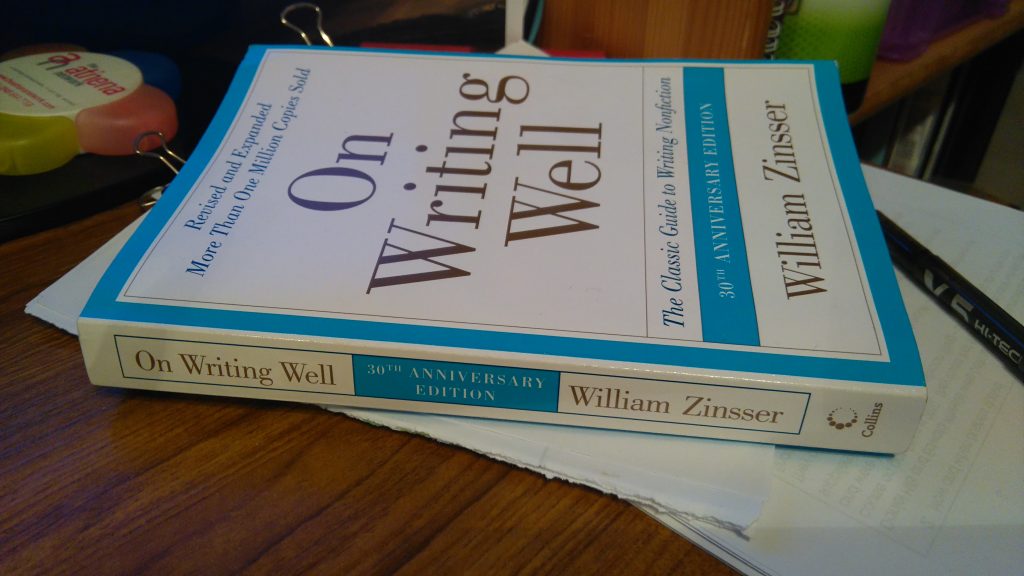I’ve been reading On Writing Well by William Zinsser and have been delighted by some of his descriptions of convoluted use of English. A classic example is the announcement that ‘We are presently anticipating experiencing considerable precipitation’ really means ‘it may rain’!
The copywriter should be invisible – the words should not trip up the reader or lead them to wonder what that really means. A good writer will create clean copy, simple and easy to read.
The problem is that some so-called commercial copywriters write for the client and not for the reader. The result is copy peppered with ‘we’, ‘our’ and ‘us’; a megaphone that delivers the message ‘we’re wonderful – and we know it’. Where is the reader – their potential customer – in the equation? What do they want to read about?
I once attended a seminar delivered by an American literary agent and she surprised a room full of aspiring authors with the information that few people get past chapter 3 in non-fiction books.
How many books do you have on your bookshelf that you still haven’t finished?
With non-fiction it’s easier to disengage at the end of (or sometimes even part way through) a chapter because, unlike fiction, there’s no story carrying you on.
That doesn’t mean that all fiction writers are good writers, I recently read a book where I really struggled with the first 20-30 pages. It was so repetitive and, as it was written in the first person, constituted a bit of a rant. It was only as there were some clever hooks in the story that led me to persevere to find out what happened to the heroine.
The urge to say the same thing in several different ways when you have very little to say is strong. More copy constitutes more value – doesn’t it?
No! We’re all busy and if we can get the message over quickly and succinctly then all the better. Your reader will appreciate that you’re not labouring the point and wasting their time.
Having said that, there is much that a commercial copywriter can learn from a good fiction author. The most important of these is that we all love stories. When I go out to promote the charity I volunteer for people want to hear the stories of the people we’ve helped. Whilst they’re mildly interested in the facts and figures, the stories reach their hearts.
This is why people fill their websites and marketing material with testimonials – effectively stories about people who have experienced their services or bought their products. Often they’re not used as well as they could be, I think a short case study that sets the scene and explains what the customer’s problem was, how it was sorted out and then add the quote from the customer to round it off, creates a very effective story and is more likely to engage the reader than just the quote.
To get back to where we started – always write with your reader in mind, keep asking yourself what they would really want to know. When you’ve written your piece go back and edit it ruthlessly, trim every excess word out. If the word doesn’t earn its place delete, delete, delete.
The result should be a short piece of compelling copy that will engage the reader and get them to take action.
If you’d rather not write your own copy – and want an expert on your team who can capture your tone and style, just give us a call on 01245 437296.

